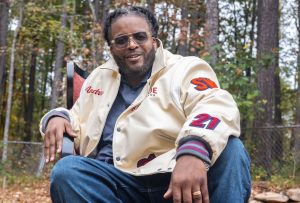Several decades ago, my wife and I enrolled our two older sons in a new Christian school in another state that was supported by three different churches, including the church where I served on staff. I had inquired whether the school required uniforms which, I was told, they didn’t. We then bought the boys’ school clothes a couple of weeks before classes began.
A few days before classes were to start, I received a letter (as did, I assume, all parents) outlining what was and was not acceptable attire for students. I was terribly dismayed to read that blue jeans were on the “not permitted” list, Since I couldn’t afford two full sets of school clothes for each son on an associate minister’s salary, I called the school.
I was routed to a lady that I can only refer to as the “clothes police.” I explained my dilemma, but she remained firm — no jeans.
“Why not?” I inquired.
“Because we want our boys and girls to look like Christians.”
“Of what era?” I asked.
“I beg your pardon. What do you mean?” she queried.
“Well, if we want them to look like Jesus, or the Apostles for that matter, a robe, a cloak, and a pair of sandals with no socks should do it.”
She was not amused. But neither was I.
I pressed as to why jeans were on the devil-worshipping, worldly, pagan list. It was then that I was informed that only blue jeans were on the no-no list. Green, red, grey, black, white — these colors of jeans were acceptable. On, and bule jeans were acceptable if they were “designer jeans,” which cost three to four times more than the Sear’s “Toughskins” we had purchased for the sons. My mind swirled as I tried to take it all in.
Now, the reason I had inquired if the school required uniforms is that I would have bought uniforms. Actually, I like uniforms. School uniforms put all the kids on an even playing field and one can’t tell by their clothes whether the parents are wealthy, or the kid is on a scholarship for worthy poor students.
I finally realized that what the clothes cop was really saying is that “We don’t want our students to look like they come from blue collar families.” But, hey, if you can afford designer blue jeans no one would mistake you for working trash.
I came from a blue-collar world. My father, one of the greatest and most intelligent men I have ever known, was an electrician. My mother’s stepfather, my Grandpa, was a pipe fitter and belonged to a union. He was one of the top five influencers, other than my parents, in my first two decades of life. When I told her that I thought the rule was discriminatory and wrong, she merely said that, “You are just rebellious.
It was all I could do to hold my tongue (I speak, or at least have spoken, fluent “Marine Corps”) but I did. In the end, we bit the bullet and bought them “approved” trousers.
I am always a bit amazed by Christians who insist that believers should “look like Christians.” It is terribly patronizing for one thing and enormously arrogant for another. I have been to a number of countries and visited their worship services and I can attest that they just might look nothing like Americans on a Sunday morning. They look like who they are.
In Africa, one church we visited had people walking for ten miles to church and ten miles back to their home villages. I don’t know what African Christians are supposed to look like but if it’s “You will know that they are Christians by their love,” as one song says, then they look just fine.
My parents, blue-collar though they were, when they took me to the Methodist Church near our working-class home when I was a child, always wore the best they had. I pastored churches in the rural backwaters of northeast Tennessee where some men wore their “dress bib-overalls” to church because it’s what they had, and they looked like real Christians to me.
There was one man who came to church in his bare feet because he had no shoes, and his pride would not let him accept charity for new ones. He looked like a Christian anyway. The Bible says that man looks at the outward appearance, which is what the clothes cop and many judgmental church folk do. But it also says that “God looks at the heart.”
So, it’s not the outer appearance, or the hair styles, or the makeup, or jewelry, or suits and ties, or tattoos, or piercings, or lack of them that is the measure of a Christian believer. Jesus said, “By this shall all people know that you are my disciples — that you have love, one for the other.” That’s what a Christian looks like.
[David Epps is the Rector of the Cathedral of Christ the King (www.ctk.life). Worship services are on Sundays at 10:00 a.m. and on livestream at www.ctk.life. He is the bishop of the Diocese of the Mid-South (www.midsouthdiocese.life). He may be contacted at [email protected].]













Leave a Comment
You must be logged in to post a comment.